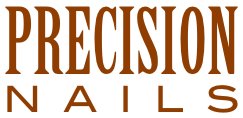It’s hard to predict where the nail industry will trend. Years ago, who would have anticipated the incredible popularity of gel polish, or the total absurdity of fish pedicures? The fact that gel polish has become a trend, while fish pedicures have not, suggests that some changes are embraced and others rejected for a reason. When evaluating a new product, service, technique or business practice, I consider whether it advances my professionalism, provides a workable solution to an existing problem and serves as a safer, more efficient and cost-effective alternative to my present choices. These criteria help me make informed decisions for my own salon, but does not make me any more prescient. So rather than attempt to predict trends for the nail industry, here’s my wish list for 2011.
- Despite the expedience and cost savings associated with using dirty files, tools and foot spas, nail professionals will take responsibility to follow the health and safety rules. Being “clean” will become the norm, rather than the anomaly it is currently. Voluntary compliance will protect consumers, increase our professionalism and reduce the need for enforcement. Our state boards have enough to do without the added burden of dealing with licensees who know better, but choose to act irresponsibly.
- Consumer outreach will reinforce the value of our training and licensure, so that consumers will demand quality services from licensed professionals in licensed establishments only. Unlicensed activity will decrease and average service prices will increase when consumers no longer compromise their health and safety for low prices.
- Beauty schools will fulfill their mission of education by hiring competent instructors, providing an adequate supply of professional products and preparing students for success beyond licensure. The significant number of hours spent in school will be utilized optimally to train students on current techniques and best practices, including proper sanitation. Students will have ample opportunity to perform services on real clients rather than on plastic practice hands.
- In addition to teaching technical skills, beauty schools will teach students about the legal rights and responsibilities associated with being a salon owner, an employer, an employee and/or booth renter. Salon owners will compensate their employees legally or treat their booth renters as the independent businesses they are, whichever is applicable. More professionals will protect their business/financial interests with the appropriate insurance coverage (liability, property, workers’ compensation, etc.).
- Beauty professionals (including unlicensed salon owners) will claim ALL their income and pay their taxes. Failing to do so demonstrates a blatant disregard for the law and disrespect for the beauty industry. Unfair competition undermines our professionalism and our industry can longer afford to be any part of the underground economy.
- Nail professionals will eagerly participate in continuing education, whether it’s required or not. Given the inconsistent (and that’s being generous) quality of beauty school education, all post-licensure education could be considered remedial. But given the immediacy and accessibility of information, particularly via the internet, there’s no excuse for being uninformed. In addition to accessing industry sources, you’ll read consumer sources to be aware of (mis)information your clients will undoubtedly encounter. Your clients should never be telling you what’s new; that’s your job.
- Participation in beauty shows and networking events will reach record numbers, much to the delight of event organizers, manufacturers and educators who invest hundreds of thousands of dollars in showcasing their products. While attending these events, beauty professionals will conduct themselves appropriately, including dressing the part.
- Rather than sensationalize the negative, misrepresent the facts and scare consumers, the media will rely on beauty industry experts when presenting stories about professional nail care. If a story can’t be done without satisfying the journalism standards of accuracy, fairness, accountability, etc., it shouldn’t be done at all because we don’t need that kind of publicity.
- The words “spa,” “natural,” “organic” and “green” will lose favor as consumers and beauty professionals will realize how overused and meaningless these words have become. Giving too much credence to these words may be hazardous to your credibility, if not your health.
- Manufacturers will present their products with integrity, rather than mislead with buzzwords and marketing speak. As product consumers, we have the right to know what ingredients products contain and a responsibility to use them safely and effectively. We should know where the science ends and the marketing begins, and not cross that line with our own clients.
- Manufacturers of professional products will renew their commitment to salon professionals, through education, research and inventory control. If the term “professional” means anything at all, it suggests that these products are of a higher quality and that professionals use these products in salons to achieve optimum results. If it’s only a marketing term to appeal to consumers, then it’s meaningless.
Most trends within the nail industry start in the salon, so start your own trend for 2011 by being the best nail professional you can be.
By Jaime Schrabeck, Ph.D.



